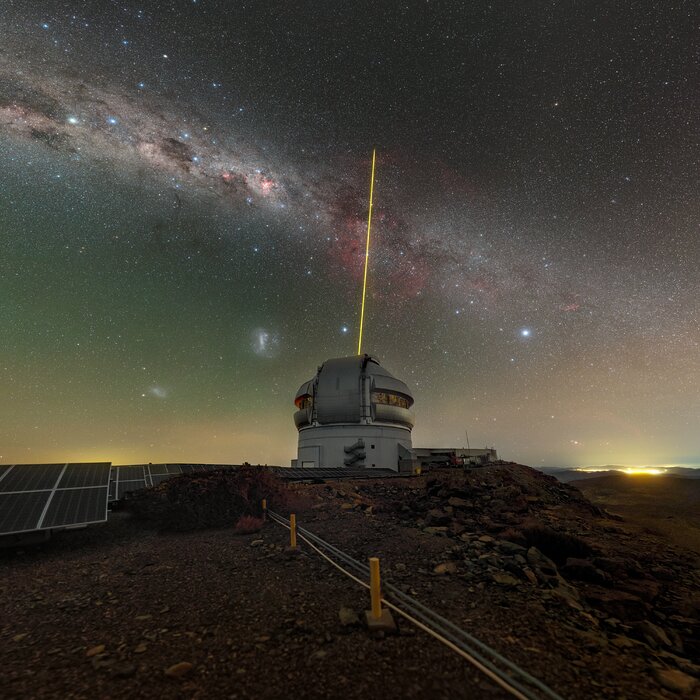Gemini and Sights of the South
The Milky Way flows across the southern hemisphere’s night sky in this photograph of Gemini South, one half of the International Gemini Observatory. Supported in part by the U.S. National Science Foundation and operated by NSF NOIRLab, Gemini South resides on the summit of Cerro Pachón in Chile, a location well known for its dazzling dark skies. Here it’s operating its constellation of five laser guide stars, which is used by its advanced adaptive optics system to reduce the blurring of images that’s caused by Earth’s atmosphere. Speckled through the Milky Way are some iconic constellations: Centaurus (the centaur), Crux (the Southern Cross), and Canis Major (the Great Dog — which is distinguished by the brightest star in the sky, Sirius). The large red splotch in the Milky Way at the center of the image is the Carina Nebula, one of the largest diffuse nebulae in our skies. To the left of Gemini South under the Milky Way are two satellite galaxies, the Large and Small Magellanic Clouds (LMC and SMC respectively). These two dwarf galaxies orbit our own galaxy, making them our nearest galactic neighbors. Their proximity means that astronomers can easily study their stellar populations in detail, so they are popular subjects of astronomical research. They have been known to Indigenous cultures of the southern hemisphere for thousands of years and also appear in records written by early explorers from the northern hemisphere.
This photo was taken during the NOIRLab 2022 Photo Expedition to all the NOIRLab sites. Petr Horálek, the photographer, is a NOIRLab Audiovisual Ambassador.
Credit:International Gemini Observatory/NOIRLab/NSF/AURA/P. Horálek (Institute of Physics in Opava)
About the Image
| Id: | iotw2441a |
| Type: | Photographic |
| Release date: | Oct. 9, 2024, noon |
| Size: | 8515 x 8515 px |
About the Object
| Name: | Gemini South |
| Category: | Gemini Observatory |
